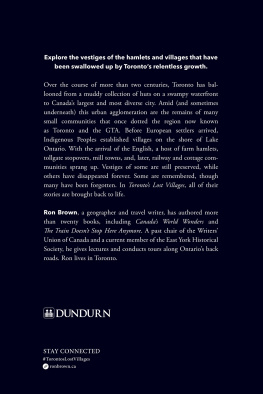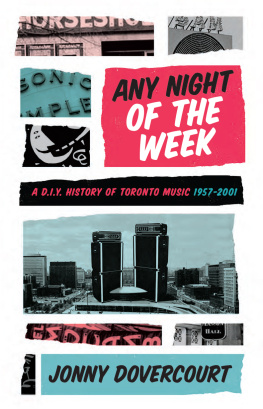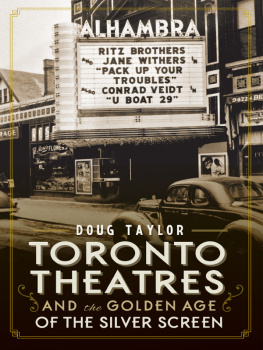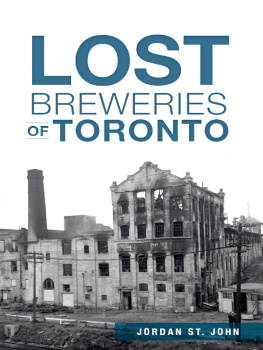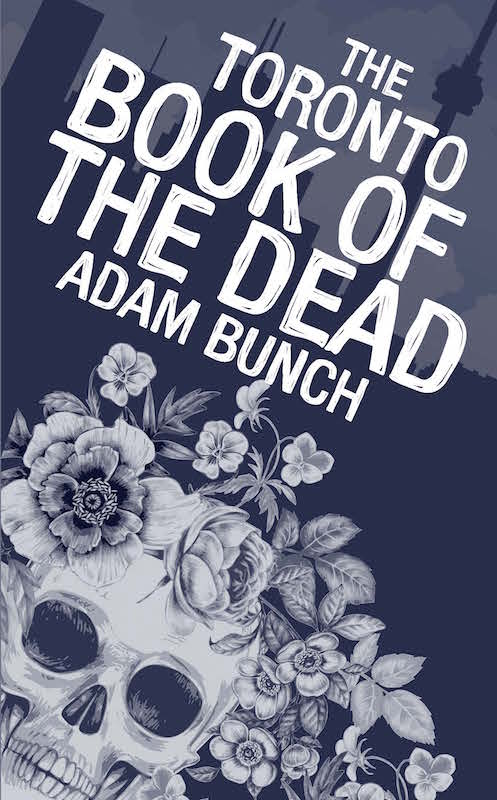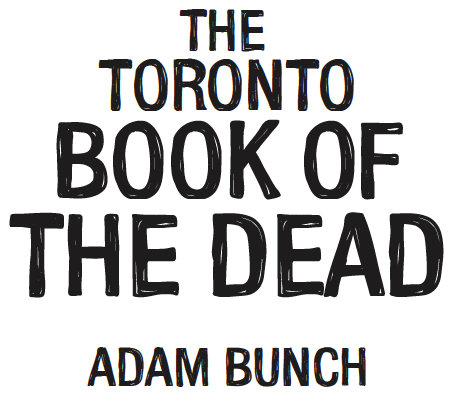FOREWORD
Torontos Dead History is Quite Alive
D espite being a city of writers and storytellers, Toronto has a pervasive reputation among its citizens that the city isnt as interesting as other places, that it just doesnt have the same kind of stories as other, well, more storied cities. Though the shelves in the Toronto sections of each library branch are filled with Toronto tales, both fictional and true, the city doesnt viscerally own and know its own multifaceted story as well as it should. History-making, then, remains an important endeavour in Toronto, one that requires constant effort to tell and remind the people who live here why this place is the way it is.
Perhaps its a condition of being a younger city, one that has become the cosmopolitan metropolis it is today over just a few short decades. Or maybe its the citys deeply rooted colonial condition, where you cant walk a block without seeing or reading a reference to Britain, the mother country. These take people out of their local environs and suggest, not so subtly, that it is there that the really important things happened. Toronto has gone along with all this with partial complicity: this most loyal provincial outpost wasnt called the Queen City by accident. All of this has resulted in a civic mythology that is lagging behind the city Toronto has become.
Yet a rich cache of stories has always been here, waiting to be brought to life. The foundation of storytelling laid down by authors in the past and present is being built on and expanded in innovative ways. It doesnt hurt that Drake, in his pop superstar way, has said its okay to like, maybe even be proud of, Toronto. Today theres lots of space for other storytellers because theres an audience demand for it, and those stories will take on a variety of formats, like Adam Bunchs most unique approach to Toronto, a public historian who drifts back and forth between fiction and non-fiction versions of Toronto past and present.
Bunch has been mining and creating Torontos mythology for some time. As the creator of the Toronto Dreams Project, hes written a kind of fan fiction for Torontos history by imagining the dreams of the citys historic figures and attaching those dreams to its very geography. By using postcards as his medium, and physically placing the dream stories he has created in the very places they take place or are connected to, Bunch is actively connecting stories to the city, a trick that ensures they remain rooted here and with a better chance of being remembered.
Mythologies, whether civic, national, or otherwise, arent built on the absolute truth alone. Imagination plays a role in bringing history to life and helps lodge it in the living memory of those who live in and visit the city. The Toronto Dreams Project projects the idea of the city beyond what we already know and suggests theres untold potential and possibility here: its an exciting place to dream of our own future.
Yet Bunch is also committed to the citys factual history with his Toronto Dreams Project Historical Ephemera Blog, where he compiles the vast amount of research hes uncovered and turns it into compelling social histories of Toronto, work hes shared to wider audiences as the history columnist at Spacing magazine. As with his Dreams project, Bunch uses geographic points throughout the city places we can walk by today and look at and stand in to connect those histories and stories to the city. Stories connected to geography tend to be remembered because the physical presence of that place is a constant reminder of those stories.
However, Toronto is a city that is always changing, building and rebuilding itself, so even the geography here can be untrustworthy. Whether standing atop a buried creek, in a parking lot that was once a grand or even drab building, or on the waterfront created by dumping fill into the lake, never assume the landscape here hasnt been manipulated or wholly invented. The dead, though, are eternal and remain a direct connection to history. With The Toronto Book of the Dead , Bunch combines both geography and the stories of those whove left a mark on this place into an absorbing look into Torontos thousands of years of human history. Death provides a new lens through which to see Toronto, replete with opportunities for story tangents and historical threads that Bunch follows as if theyre tributaries in Torontos ravine system.
Compared to other global cities, Toronto (it was established as the Town of York in only 1793) is relatively young, but in The Toronto Book of the Dead youll find a city that goes back much further, well before the colonial era that has received the most official attention. And though the city has changed and expanded, there is still geography to attach the stories to. For instance, those who ignore the plaque attached to a boulder there may think that Tabor Hill is just a park in Scarborough with a rather nice hill, but readers will discover through Bunchs account of it that the place is an important one, closely connected to the pre-European contact era. That plaque on the rock by the hill, surrounded by post-war bungalows, tells passersby this is a First Nations ossuary, but doesnt elaborate on how actively the early European settlers tried to assimilate the local population and erase their culture four hundred years ago. In this book, Bunch provides the rest of the story, and while he embraces the colonial history we have, he continually sets it in the context of a much longer and more robust history.


